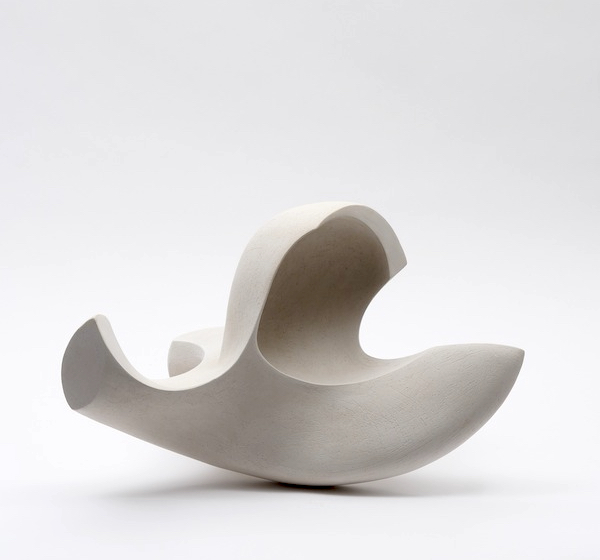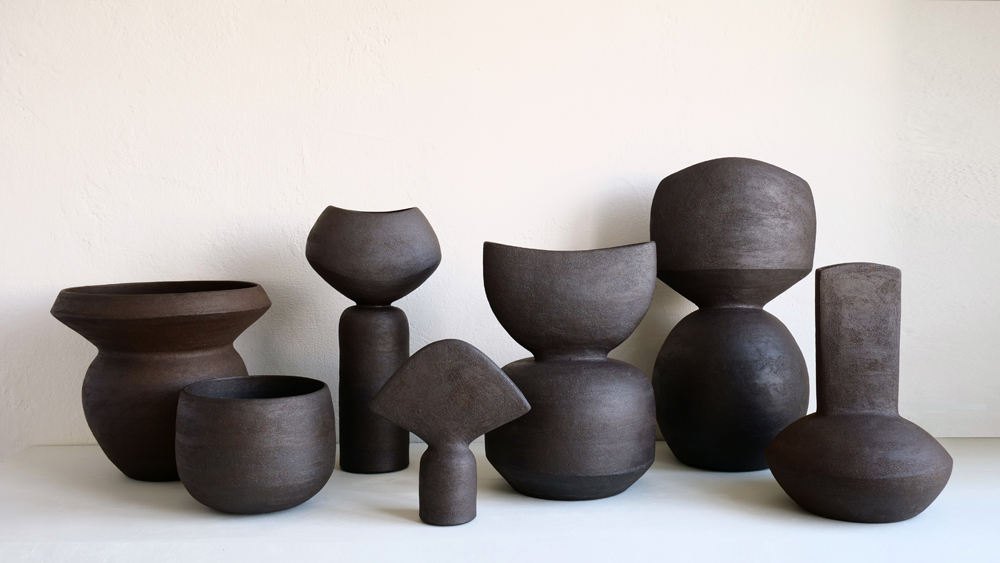Alright – so today we’ve got the honor of introducing you to Erin McGuiness. We think you’ll enjoy our conversation, we’ve shared it below.
Erin, thanks for joining us, excited to have you contributing your stories and insights. What’s been the most meaningful project you’ve worked on?
The most meaningful project I’ve worked on was an artist residency in Malta — a small island nation between Sicily and North Africa, rich with a cultural crossroads and home to some of the world’s oldest standing temple sites, predating Stonehenge. I had long studied the work of archaeologist Marija Gimbutas, whose research into Old European, pre-Christian cultures revealed a society that revered the Earth and the Goddess, valued connection and cooperation, and flourished for a thousand years without war. Their symbols, myths, and architecture carried a wisdom I believe we need now.
Through Spazju Kreattiv, Malta’s national art foundation, I lived in Valletta and spent time on Gozo, visiting the Ġgantija Temples and the underground Xagħra Circle. I met with archaeologists, walked sacred sites, and let their structures speak in both historical fact and symbolic resonance. The days were a dialogue between scholarship and mysticism — mornings in conversation about Neolithic cosmologies, afternoons in a quiet state of bliss or vision, sensing a truth older than language. Then the process of sculpting directly with clay, as earth itself, felt like the perfect medium through which to re-member that wisdom — to “sing the earth up,” as I often think of it.
Unexpectedly, I began to feel another layer — a buried cultural wound. Conversations and intuitive impressions pointed to political and religious conflicts of the 1970s that had left deep, unspoken scars. This story, like so many I’ve felt as an artist, seemed to want to surface.
That is the role of the artist as I understand it: to sense the shadow within a culture, to draw it into light, to offer it form so it can be witnessed and, perhaps, healed. The residency became less about creating objects and more about becoming a conduit — allowing history, memory, and the ineffable to pass through my hands into clay. In the studio, that alchemy took shape: the soul of place and time, brought into matter.
For me, working in clay is a way of alchemizing what is unseen — turning the raw earth of history, memory, and emotion into forms that carry beauty, truth, and the possibility of renewal back into the world..

Erin, before we move on to more of these sorts of questions, can you take some time to bring our readers up to speed on you and what you do?
I’m a sculptor whose work carries the paradox of feeling both ancient and completely of the present moment. My practice is rooted in clay, yet it reaches toward the metaphysical, inviting a shift from passive looking to active, embodied experience. My pieces are totemic yet sensual, meditative yet invigorating — objects that seem to breathe, calling the viewer into deeper relationship with themselves and the natural world.
The forms I create navigate the spaces between light and shadow, the raw and the refined, the masculine and the feminine. Each coil or carved line is a meditation in form — a dialogue that moves beyond aesthetics into questions of connection, wholeness, and the role of the artist in society. For me, clay is not just a material; it’s a living conduit, a tangible link to the earth and its wisdom.
I draw deeply from my study of Old European Neolithic culture — pre-Christian societies that revered the earth, honored the goddess, and recognized the interconnectedness of all life. These ancient frameworks, non-hierarchical and deeply ecological, inform my vision of how art can bridge the visible and the unseen, the fractured and the whole.
My sculptures don’t just sit in space; they shape it. They transform emptiness into fields charged with presence, reminding us that integrity of form — in objects, in spaces, and in ourselves — is inseparable.
More recently I have expanded my practice to also include teaching – sharing what I have gathered over the last 20 odd years. I offer workshops, one on one sessions, and immersive retreats that weave together technical skill, spirituality, and embodiment. Recently, I launched an online program called Creativity Collective to help people nurture, free, and grow their creativity. In these spaces, I guide participants through contemplative and somatic practices that open the way for their voice, authority, and purpose to emerge.
Ultimately, whether through my sculptures, installations, facilitated circles, or teaching, my aim is the same: to create spaces where people can touch into their own humanity — an uncovering of the soul. My hope is that through engaging with the work, people remember that they are interconnected with all beings, and that, like clay, their very bodies are of the earth. We are all earthwalking — living expressions of the same force that shapes matter into form.

Do you think there is something that non-creatives might struggle to understand about your journey as a creative? Maybe you can shed some light?
My creative journey extends far beyond the studio walls. I think of it like tending to a plant — the soil, the water, the sun, the surrounding ecosystem all matter. Creativity needs those same conditions: a rhythm of nourishment, solitude, and connection.
There’s a stage where I have to step away from the noise, to hear the quiet voices inside myself. It’s like walking into a forest until the human sounds dissolve — and in that tangible silence, you begin to hear birds you didn’t notice, smell the earth, feel your body soften. Sometimes that stillness stirs joy or sadness; sometimes it feels unfamiliar, even unsettling. But that’s where the work begins.
For me, creating means cultivating the inner strength to stay in that space — to let wildness surface. It’s an act of listening to impulses at the edges of awareness and trusting them. From the outside, it might look like inactivity, but it’s really a form of deep being. When I sculpt, I’m bringing that raw presence into matter, inviting the clay to awaken to its own life. It’s the soul coming into form.

In your view, what can society to do to best support artists, creatives and a thriving creative ecosystem?
A society that truly support artists, understands the value of what we offer. Art is often invisible in its pervasiveness — like the air we breathe or the ground beneath our feet, it’s taken for granted. But imagine, as a thought experiment, a world without it: no music, no paintings, no symbols or logos, no poetry, no drumbeat pulling you to dance, no song on the radio that makes you cry, no handmade cup meeting your lips with quiet ceremony.
Art speaks to what can’t be named. It moves in the undercurrent, in the mystery, beneath the surface. It adds texture, depth, and soul to human life. Artists are, in many ways, alchemists and healers — working in the realm of the collective unconscious, transforming pain, memory, and even intergenerational trauma into beauty. Like the oyster that turns an irritant into a pearl, the creative process turns wounds into something luminous.
But for this work to continue, it needs tangible support — money, connections, and visibility. These are what keep the studio lights on, cover rent, put food in the cupboard, and, most importantly, protect the time and space needed to make.
Support can be direct — buying art, contributing to an artist’s Patreon, commissioning work — or relational, through introductions to galleries, curators, or collectors. Even simple acts like sharing an artist’s work with a friend or bringing someone to an opening create vital bridges between the private world of the studio and the public life of the work. Visibility amplifies impact, connections open doors, and money sustains the making.
And there’s another layer: creativity is not the sole domain of artists. It’s a human birthright. When people cultivate creativity in their own lives — in conversation, in the kitchen, in the smallest daily gestures — they deepen their capacity to value it in others. That shared reverence becomes the foundation for a thriving creative ecosystem.
Contact Info:
- Website: https://Www.Erinmcguiness.com
- Instagram: @erinmcguiness
- Youtube: https://Www.youtube.com/@erinmcguinessceramics
- Other: Patreon:
Www.patreon.com/erinmcguiness






Image Credits
J. Jones
Molly Haas
Jack Gialanze


